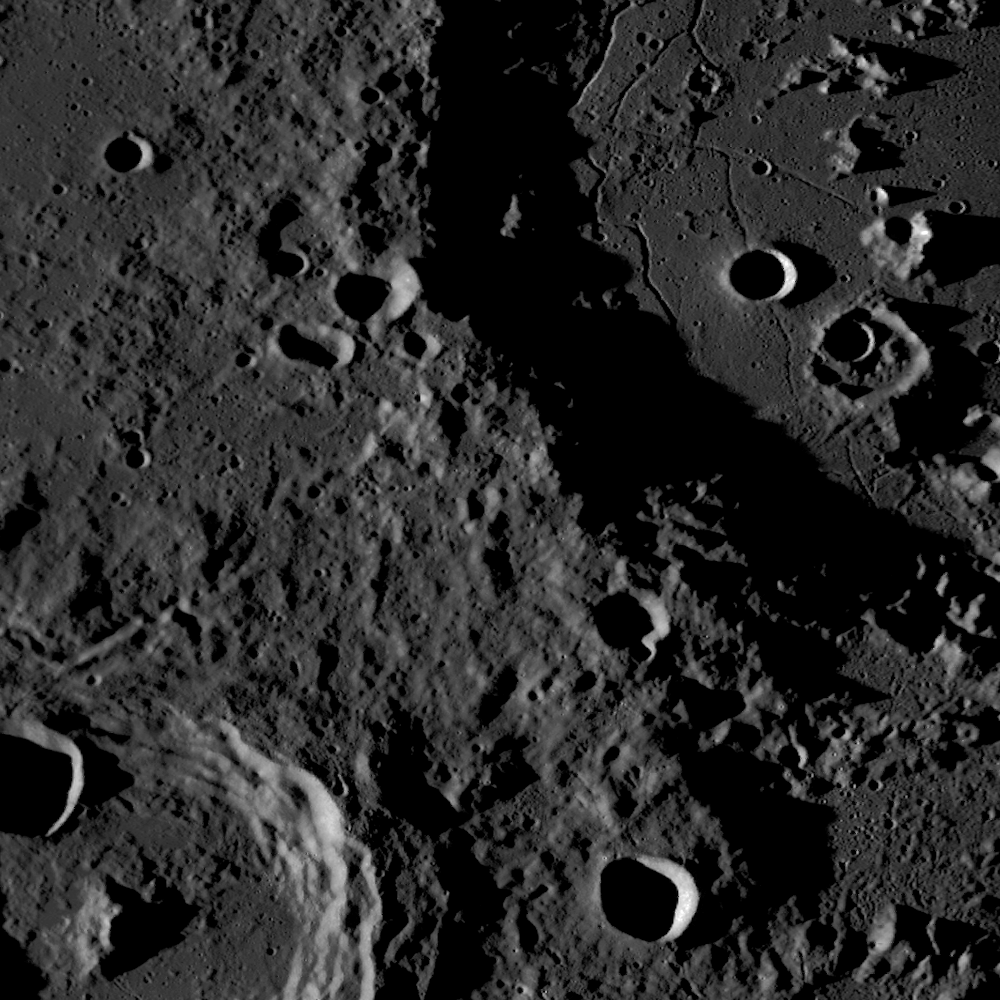
WAC images that went into this mosaic were acquired on July 8, 2009. On the bottom left is Hahn crater (approximately 80 km in diameter), with its terraced walls that form as material slumps down the sides and central peak that rebounds from depth during the impact process. A portion of the large impact crater Gauss (170 km in diameter; 35.7 degrees N, 79.0 degrees E) is in the upper right corner. Its floor appears to have been flooded with lava, which solidified and later fractured. The presence of these irregular cracks may be due to the intrusion of magma, which disrupted the crater floor as it rose and eventually stalled beneath the surface. If the material on the floor is due to extrusive volcanism, the color filters of the WAC will help to determine its composition relative to the surrounding terrain. The Narrow Angle Cameras (NACs) will allow us to see small vents and pyroclastic deposits that often occur in similar floor-fractured craters, helping to confirm that these cracks are due to volcanic activity beneath the crater.
Uncalibrated data, north is up, scene is approximately 160 km across and in simple cylindrical projection at 155 m/pixel.
Published by Samuel Lawrence on 12 July 2009